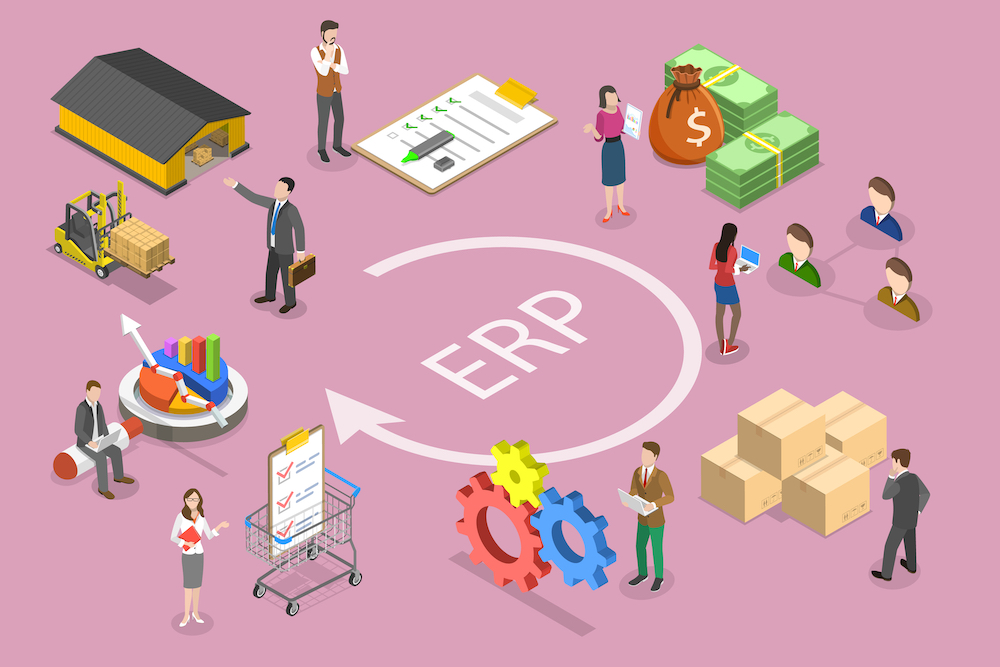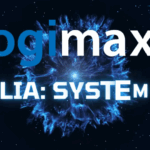
Two of the most popular types of software in manufacturing today are Enterprise Resource Planning (ERP) and Warehouse Management System (WMS) software. But what are the key differences between them? And if you need both, which approach is right for your business?
In this article, we will compare and contrast a manufacturing ERP vs. WMS, and explain when you might need both types of software. We’ll also discuss three options for incorporating WMS capabilities, including using a WMS module that is already integrated with your ERP for a powerful yet easy-to-use solution that can help streamline your entire supply chain.
What is Enterprise Resource Planning (ERP) Software?
ERP software is a suite of applications designed to help automate and integrate all the main business processes within an organization. Its main goal is to provide a comprehensive system that can manage all aspects of your business. A manufacturing ERP will include accounting, order management, product configuration, customer data, inventory control, production scheduling, manufacturing operations, supply chain management, and more. Your manufacturing ERP system should provide a clear view of all core processes and operations, helping management make better business decisions.
What is Warehouse Management System (WMS) Software?
A warehouse management system (WMS) is a type of software designed specifically for managing the day-to-day operations of a warehouse. It helps manage and control all aspects of your inventory, including receiving, putaway, replenishment, storage, picking & packing, and shipping activities. Warehouse management systems use barcode scanning technology to track inventory, enabling businesses to have more visibility and control over their warehouse operations.
Similarities Between a Manufacturing ERP System and WMS Software
Both enterprise resource planning and warehouse management systems provide vital insight and control over a business’s operations and inventory. They both offer real-time data on the state of your warehouse, allowing for more efficient decision-making. They can also both use barcode scanning technology for tracking production or inventory.
However, there are key differences between the two that should be taken into consideration when choosing which type of software is right for you.
Key Differences Between ERP and WMS
Similarities aside, there are key differences between a traditional ERP system for manufacturing and warehouse management system software. However, it’s important to note that not all WMS and ERP systems are as comprehensive, or as limited, as in the past.
Some advanced WMS platforms, for instance, handle more than just warehouse-related activities. They can also manage accounting, order management, EDI (electronic data interchange) processes, and more. These are ideal for companies specializing in warehousing and logistics, such as distribution centers or third-party logistics companies (3PL). In these cases, an advanced WMS solution can eliminate the need for an ERP.
By the same token, today’s advanced ERP manufacturing solutions are capable of handling many warehouse-related activities. Depending on your needs, you may be able to use the WMS capabilities that are standard within your manufacturing ERP software or add a specific WMS module that is already integrated with the software.

Scope
Traditionally, the main difference is that manufacturing ERP software is designed to be used across the entire organization, while a WMS is specifically designed for managing a warehouse. This means that an ERP system should cover a broader range of processes, from accounting and financials to customer order management to production. However, this range of functionality doesn’t always include the depth of features for managing a warehouse that a WMS can provide.
Features and Modules
Enterprise resource planning systems often come with a variety of modules for managing different aspects of the business. Traditional warehouse management systems are more focused on inventory-related features such as receiving, putaway, replenishment, storage, and shipping. However, modern WMS software can come with a variety of additional features and modules such as analytics, labor optimization, order management, and more.
Visibility
Manufacturing ERP software often offers multi-faceted visibility, while warehouse management software is focused in-depth on inventory and warehouse operations. The combination of the two can provide greater supply chain visibility, especially into all important areas of your business.
Tracking and Inventory Management
An ERP system typically provides the ability to track customer orders, invoices, accounts receivable and payable, production planning, sales forecasting, and more. In contrast, WMS systems are normally designed specifically for managing a warehouse, including inventory management.
A best-of-breed, complete ERP with WMS software offers the functional requirements of both systems. Not only is the ERP’s CPQ (configure, price, quote) process tied into customer service and manufacturing, but the addition of a robust WMS allows you to track and monitor the movement of goods within the warehouse. This may include receiving, putaways, replenishment, storage locations, picking & packing activities, and more, depending on your needs.
Cost
Another key difference is that manufacturing ERP software typically requires a larger upfront cost than a WMS system. This is due to their complexity and wider range of features, which need a more robust infrastructure to support them.
A stand-alone warehouse management system will cost more than adding an advanced warehousing module that is already part of your ERP software system. A stand-alone WMS may duplicate features that already exist in your ERP. Not only are you paying twice for these capabilities, but you will have integration costs.
When the WMS module is an enhanced offering of your manufacturing ERP, you are not paying for duplicate features and the software is already integrated. Be sure to consider integration costs when evaluating your WMS software needs.
Availability of Add-On Modules
Traditionally, an enterprise resource planning system will have a wide range of add-on modules available. Frontier ERP software includes basic warehouse management, but also offers a fully integrated, advanced warehouse management system (WMS) module for manufacturers with the need for enhanced features such as directed putaway or yard management.
This availability of modules allows businesses to fully customize their ERP system to fit their specific business needs. This is especially important as a business expands and needs to add software to manage key functional areas.
Bridging the Gap Between ERP and WMS: Frontier WMS
Frontier WMS is a comprehensive warehouse management system module that is fully integrated with Frontier’s manufacturing ERP software for an all-in-one solution. It provides visibility across all areas of the warehouse, including tracking orders, inventory levels, invoices, and more. It also includes advanced features such as RFID technology, barcode scanning capabilities, automated picking & packing processes, and more.
The features in the Frontier WMS module also can be customized to meet the specific needs of your warehouse. This makes it an ideal solution for businesses looking to streamline their manufacturing supply chain while taking advantage of the features offered by both Frontier ERP and an advanced WMS system.
ERP and WMS: Which Approach is Right for Your Business?
With all these considerations in mind, it’s important to determine which system is best for your manufacturing business. Traditionally, many ERP systems provide a holistic approach to managing all aspects of the business, while WMS software offers more specialized features that focus on managing warehouses and inventory.
If your manufacturing operation needs advanced warehouse management capabilities but doesn’t want to invest in purchasing and integrating two different software packages, consider Friedman’s Frontier ERP software with the advanced WMS module.
The Frontier WMS module provides powerful, customizable warehouse management features and is already integrated with Frontier’s manufacturing ERP software. This makes it the ideal solution for discrete manufacturing businesses looking to maximize supply chain efficiency while remaining cost-effective.
The Bottom Line
When it comes to pairing your manufacturing ERP with a system to manage your warehouse, there is no one-size-fits-all answer. You can use the warehouse tools included with your ERP system if it fits your basic needs.
A stand-alone WMS system may have all the bells and whistles you can think of, but there is an added cost for integration. The third option is to choose a manufacturing ERP for your business that offers an advanced WMS module that is already integrated.
Each approach has its own set of features, advantages, and disadvantages. It’s important to assess your needs and determine which solution is best for your business.
In many cases, Frontier manufacturing ERP with its WMS module provides the perfect combination of a robust enterprise resource planning tool with advanced WMS functionality, allowing manufacturing companies to get the most out of their end-to-end operation without having to maintain separate systems.
For more information, contact Friedman Corp. today.



